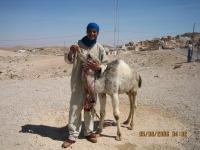The border is defined by two strong fences made of stout posts confining between them the barbed wire entanglements. One fence is on Russian soil, the other on Estonian; between them is less than a yard of neutral territory. This barrier extends the whole length of Estonia until it reaches Lake Peipus, and its continuation, Lake Pihkva, which together constitute the rest of the boundary.
Here I heard a story that at Narva Jõesuu three bathers, a woman and two men, foreigners there on a vacation, thought, since they were so close to the Russian border, they might as well crash it. Accordingly, they swam around the end of the frontier barrier, and came out of the water on the apparently deserted Russian end of the beach; when lo and behold! the guards, hidden in the forest that borders the sea, rushed out on the bathers and took them, still dripping wet, into custody. They spent three weeks in a Russian prison clad only in their bathing suits.
Similarly, a few days before my visit, an American from the Swedish-American liner just then in port in Narva, had tried to crash the border. But this time the Estonian guards had caught him and put him in prison in Narva until the ship sailed away with him.
What is there about a boundary barrier between two nations that so fascinates the imagination? Why do people come here every day as I have come? Is it to see two lines of uncommonly strong wire fence? Is it to marvel at the barriers men build against other men - to wonder how long they will hold?
Advertisement / Reklaam
Advertisement / Reklaam
Gradually it came over me that these fences, this yard wide neutral territory, marked more than a geographic boundary; it marked a distinction between two groups of people and their ways of thinking and doing. Here on the side nearest me was the neat little Estonian guard-house, fresh painted in blue, black and white stripes, like the flag. It was set in a neat garden of blue larkspur. The gate, too was gay with fresh paint in the same colors. The soldiers were trim in their blue uniforms. On the other side, was a weather-beaten guard-house, surrounded with untamed forest, with poorly-clad soldiers, walking along the railroad tracks, spanning which was a huge flamboyant structure of no particular shape, the paint flecking off it. It bore aloft a large red star, and below it the words, in Russian: "Workers of the World, Unite!"
On the west side of the boundary a small, neat, well-managed practical little country, with no slogan-bearing structure; and on the other a huge, sprawling country, concerned with ideals and careless of practical details, its ruling party enforcing its theories by force and terror.
(To be continued)




















